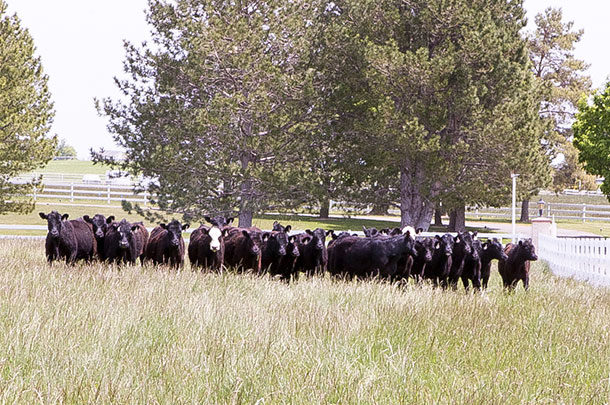Take it from a couple of industry experts, who have devoted their careers to studying and improving the livelihoods of producers across the country. As industry experts who have “been there, done that” or “been there, seen that,” they have outlined a few things you may want to avoid in order to prevent some economic or management consequences when it comes to nitrogen (N) application in pastures.
No-No 1: Applying more than 50 pounds of nitrogen per acre for any given application
According to Sid Bosworth, a forage and pasture management specialist at the University of Vermont, 50 pounds of N per acre is an adequate amount to achieve the goal of boosting production in any given application. Any more than that and you risk the possibility of nitrate accumulation.
Bosworth recommends that N should be applied just after grazing or clipping to get the full utilization of N before it is grazed again. He also suggests applying N in split applications throughout the season, with a single application of 50 pounds being the target per acre.
No-No 2: Applying nitrogen to pasture with greater than 30 percent legume concentration
As a general rule, Bosworth recommends avoiding N application if you are trying to maintain or encourage a legume species. He says that N stimulates grass growth by increasing leaf growth and tillering rates, giving the grass a competitive advantage over the legume.
“If your goal is to maintain legumes in your grass-legume pasture, then avoid high amounts of N, or in some cases any amount of N, since that can reduce the population of legumes in your pastures,” Bosworth says. “Rather than N fertilizer, you may need to invest in lime, P and K to enhance the legumes. Once they become a strong component of the pasture, they will provide adequate amounts of N to the system.”
No-No 3: Applying nitrogen in the early spring or mid to late fall
For cool-season pastures, early spring would be a time to generally avoid N applications to pastures, Bosworth says. Applying N at this time can boost growth for earlier grazing, but could result in excess pasture in late May. Unless you are planning to divert some of the pasture for hay, this isn’t a cost-effective approach.
In addition to applying N too early in the spring, applying N mid to late fall could pose some concerns as well. If you are planning to stockpile your grass for winter grazing, applying N in early to mid-August can help accumulate growth. But any later than that, or for any other reasons, it could make your perennial plants susceptible to winter kill, depending on where you live.
Like with most things, Bosworth points out that there are exceptions to the rule. But as a general recommendation, he encourages producers to avoid spring and mid to late fall applications of N.
No-No 4: Applying nitrogen in pastures with heavy weed presence
Jessica Williamson, a forage crop specialist at Pennsylvania State University, encourages producers to have a weed control program in place before N application, or to apply N to pastures with dense desirable forage stands so they can outcompete weeds for nutrients.
“Weeds respond to nitrogen too,” Williamson says. “If you have a lot of weed pressure in your pasture, adding that additional nitrogen isn’t just going to help your grass; it’s going to help the weeds outcompete the grass. So, it’s important that if you’re applying high rates of N that you have weeds under control. It doesn’t have to be perfect, but if you have a really weedy pasture, N is going to do nothing but increase the competition of those weeds with your desired species.”
No-No 5: Applying nitrogen in a long-extended dry condition
Williamson points out that N isn’t your answer to grass growth during a dry year. It isn’t cost-effective, and it can cause some management issues in terms of nitrate accumulation and nitrate poisoning. The only thing that will compensate grass growth in a dry spell is irrigation, she says.
Agreeing with Williamson, Bosworth also points out that there is high risk for excess nitrates in soils when there is an extended dry period, followed by rain that stimulates growth. If there is excess nitrate in the soil, then those first few days after the relief of drought can be risky because nitrate uptake will exceed N assimilation into protein and other plant constituents, he says. The best practice is to wait a few days and allow the plants to grow a little before grazing.
N fertilizer can be a viable tool for pasture management if applied appropriately and at specific times. Bosworth and Williamson encourage producers to think of N as a short-term management tool for producing temporary increases in pasture growth. It may not be an option for every operation, but applying it correctly can certainly boost productivity and reduce the risk of nitrate accumulation, wasted forage and decreased profitability. FG

Cassidy Woolsey
- Editor
- Progressive Forage Grower
- Email Cassidy Woolsey
PHOTO: If used correctly, nitrogen fertilizer can be used to improve pasture productivity and utilization throughout the grazing season. Staff photo.









